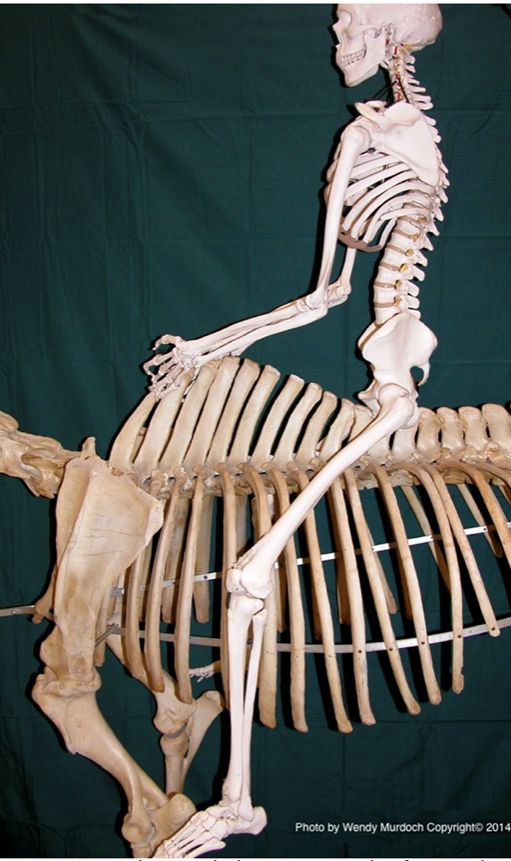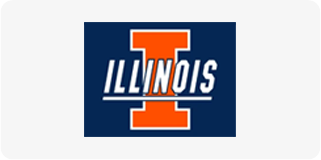Equine Insights: Where should you sit on your horse’s back?
Posted by Dr. Hilary Clayton on Nov 5th 2024
Have you ever asked yourself, “how do I properly sit on my horse?”
Today we’ll look at where we sit on the horse’s back and how the horse’s conformation affects our leg position.
In previous blogs, I’ve explained how the vertebrae are joined together to form a bridge connecting the forelimbs and hind limbs that transmits forces and coordinates movements during locomotion. The vertebral column also forms part of the ribcage that protects the internal organs. The ribcage consists of the vertebrae on top, the sternum or breastbone below, and the ribs curving outward on each side. Inside the ribcage are the heart and lungs, the liver, stomach and some of the intestines. Figure 1 shows the shape of the ribcage as seen from the side.

Figure 1: Skeleton of the horse’s ribcage and upper forelimb seen from the side. The position of the diaphragm is shown in red.
Let’s talk about anatomy and the equine ribcage.
The sternum runs in the groove between the pectoral muscles that form the horse’s chest, passes between the forelimbs and ends a few inches behind the elbow. Behind the elbow, the sternum forms the girth line.
Horses have 18 pairs of ribs, a pair for each thoracic vertebra. The upper part of the rib is composed of bone, but the lower part is made of flexible cartilage that allows some movement.
- Ribs 1-8 are true ribs that attach to the sternum. These ribs are broad and flat so the shoulder blade can glide across them.
- Ribs 9-17 are false ribs which curve outwards to form the horse’s barrel before the lower ends merge together to form the costal arch. These ribs are mobile especially during breathing when they rotate forward and outward, like a bucket handle rotating around the top of a bucket. After cantering up a hill, you may feel the ribcage expand as your horse takes a deep breath
- Rib 18 is a short floating rib that lies within the abdominal muscles on each side. The floating ribs may be different lengths on the left and right sides.

Figure 2: A horse’s ribcage seen from above. The horse’s neck and head would be to the right of the diagram. The vertebrae run along the middle of the diagram with the ribs flaring out on either side forming the curve of the horse’s barrel. Note that the barrel is narrow in front but gets wider in the area where the rider sits.
The roundness of the barrel varies between horses. When the ribs flare out widely, we say the horse has ‘well sprung’ ribs. When the ribs are flat with a narrow barrel, it is called ‘slab-sided’.
The equestrian position defined and the effects it has on the horse.
Riders should sit with their legs draped around the barrel but our knees move only in one direction; they flex (bend) and extend (straighten). This means the rider’s calf can swing back and forth but they don’t allow the calf to swing in and out. Consequently, a horse with a less rounded barrel is easier for the rider’s legs to conform to.

Figure 3: Human skeleton sitting on a horse skeleton. Note the forward position of the rider’s leg. This is the seat adopted when riding bareback.
The shape of the horse’s ribcage should be appropriate for the length and proportions of the rider’s thigh and calf, especially when the horse has well sprung ribs. Ideally, the widest part of the horse’s barrel should correspond with the position of the rider’s knee. This allows the rider to turn the leg out slightly then bend the knee to bring the calf into contact with the lower part of the barrel.
When a rider’s knee lies higher than the widest part of the barrel, the lower leg tends to stick out. Often, the rider will sit in a chair seat with the knees pushed forward over a narrower part of the barrel or they rotate the leg outward at the hip so the knees and toes point outward In this position, bending the knee brings the calf against the horse.
Riding a horse that’s too wide can lead to chronic hip pain for the rider. Therefore, it’s important to choose a horse with a suitably shaped barrel that allows the rider to sit comfortably and give the aids in a correct position.





